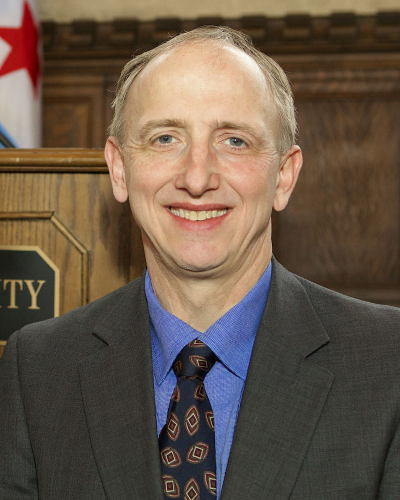Jul 02, 2014
Study: Relaxed FAA policy fails to make air travel more ‘tech friendly’
Study: Relaxed FAA policy fails to make air travel more ‘tech friendly’
CHICAGO — A new study by DePaul University’s Chaddick Institute for Metropolitan Development raises doubts about whether the recent relaxation of the Federal Aviation Administration’s policy on the use of personal electronic devices on airplanes has made flying more “tech friendly.” With the coach cabins of airplanes more crowded than ever before, less leg room and the lingering requirement that all laptops and heavier items be stowed away during takeoffs and landings, most flyers are still not using their electronic devices for most of the flight.
“Consumers are decidedly unenthusiastic about the change, since they still cannot surf the Internet, email, text or place phone calls during takeoff or landing, which can consume more than 40 minutes of flight time,” said Joseph Schwieterman, director of the Chaddick Institute and co-author of the study. “We expected the new policies to encourage more consumers to remain ‘powered up’ from gate to gate, but that simply didn’t happen.”
The study — the fifth in an annual series by the institute — collected data from 7,034 passengers on 106 bus, train and plane departures between February and June and made comparisons with a similar sample from the previous year. The study found:
Use of personal devices among bus and train passengers remains on an upward trajectory. Discount city-to-city buses services (such as Megabus) experienced the fastest increase in technology use. More than 59 percent of passengers on discount bus lines were “powered up” at observed points — a rate that outdistances Amtrak, conventional bus and air travel by a wide margin.
Technology use by airline travelers remains flat and continues to lag behind other modes. The new policy, which took effect in January, provides airlines new freedoms to allow for the use of certain devices during taxiing, takeoffs and landings. Whereas 35.3 percent were observed using devices at cruising altitude last year, 35.9 percent were observed doing so this year — by far the smallest increase observed since data collection began in 2010. Most passengers instead opted to devote their time to reading print material, eating, sleeping and relaxing.
Tablet and e-reader use once again has risen sharply on all modes observed. More than one-third of devices used on airplanes are now tablets or e-readers.
The ability to use devices continues to stimulate bus and train travel, which have features highly desirable to those placing a premium on the ability to work while traveling.
The results point to a fundamental problem facing airlines as they try to stimulate travel on trips of fewer than 400 miles — trip lengths in which the hassle factor of airlines looms large. “Travelers want to stay in control and that means staying digitally connected,” notes Schwieterman. He adds, “Many still view being aloft as dead time, even when Wi-Fi can be purchased. A sizable share of flyers simply say ‘to heck with it’ and suspend technological pursuits until they reach their destination.”
Since launching the annual study in 2010, the Chaddick Institute has observed more than 32,000 travelers on buses, trains, and planes. No other dataset of this kind is known to exist, according to Schwieterman.
Co-authors of the study, “The Personal Tech Tidal Wave: The Rising Use of Electronic Devices on Intercity Buses, Planes & Trains,” are Alyssa Battaglia, Blaire MacHarg and Marisa Schulz. More information about the study is online at http://bit.ly/transporttech2014.
###
SOURCE:
Joseph Schwieterman
jschwiet@depaul.edu
312-362-5731

Joseph Schwieterman, director of the Chaddick Institute for Metropolitan Development, has co-authored a new study on the use of electronic devices on intercity buses, planes and trains. (Photo by Jeff Carrion)
